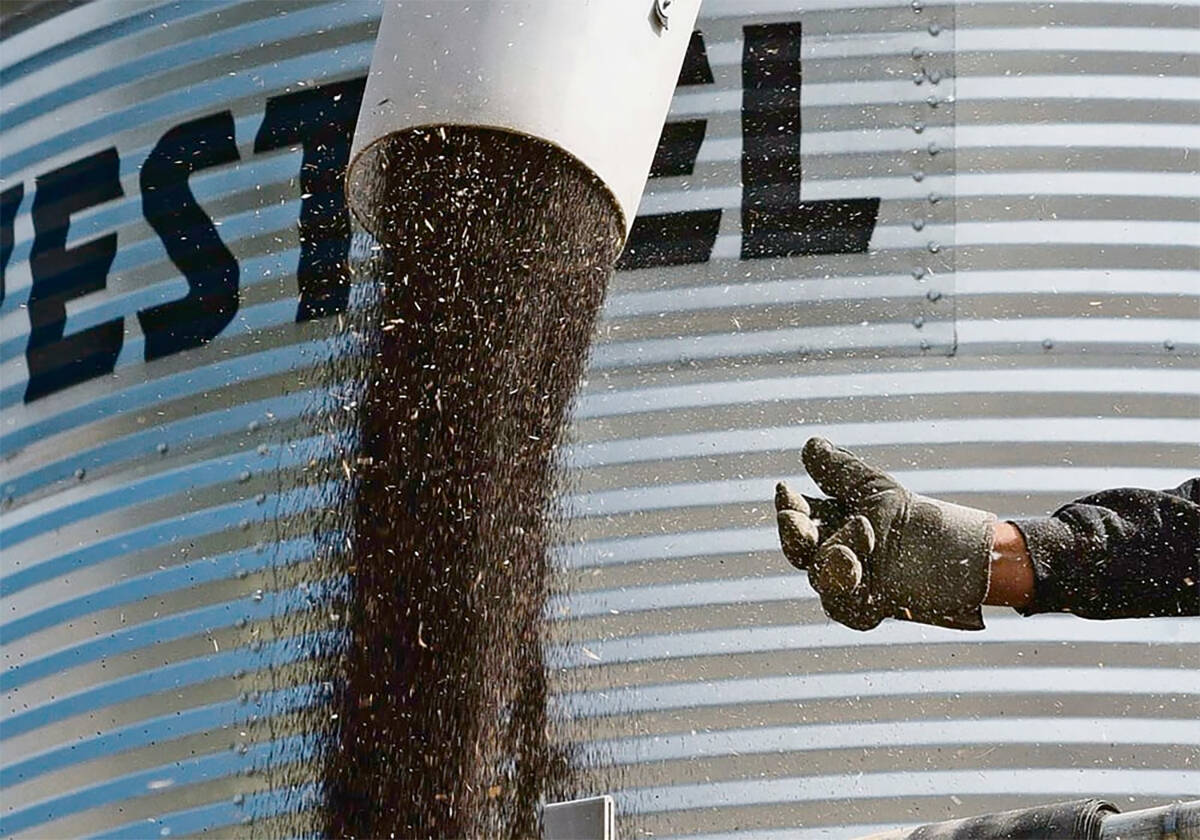The battle against flea beetles will have to employ other tactics if the Pest Management Regulatory Agency proceeds this year with a proposed ban of neonicotinoid seed treatments.
Foliar-applied chemicals, reduced tillage, seeding dates and seeding rates could become part of the battle plan if producers lose the use of clothianidin and thiamethoxam to control the pesky beetles.
Insect pest specialist Hector Carcamo of Agriculture Canada in Lethbridge gave a few suggestions to farmers last month during the Farming Smarter conference. He said flea beetles seem to prefer tilled fields so “if you’re doing less tillage, you are already reducing the risk of flea beetles.”
Read Also

Farmers urged to be grain-safe this fall
Working around grain bins comes with risk, from farmers falling to drowning in grain: Experts have five tips to help avoid grain-related accidents this harvest.
That’s good news for most of the province’s canola-growing areas because minimum or zero tillage has been widely embraced.
Seeding dates also play a role in flea beetle damage, though unpredictable weather makes ideal dates equally unpredictable. However, Carcamo said in the last four years, canola plots seeded in early May had more flea beetle damage than those seeded in late May.
That may be because the striped flea beetle species is becoming more dominant, he said, and it becomes active earlier in the spring than other species of the pest. Planting canola in the fall might be one option, but it can be risky and is not foolproof against damage.
“If you actually succeed in getting canola to overwinter, survive the winter … then the crop is going to be in an advanced stage and you will escape flea beetles,” said Carcamo.
“It doesn’t mean that there won’t be any damage. Once the plants are at the two-leaf stage, once they have two, three, four leaves, they’re growing well and the crop is not stressed, then they are going to be able to tolerate flea beetle damage.”
A higher seeding rate can also reduce damage, and studies show planting on 12-inch spacings results in less damage, although the reasons are unknown.
Carcamo cited another study indicating that larger seeds have an effect.
“If you plant the bigger seeds you actually will have less damage and you will protect your yield,” he said.
That is because larger seeds grow faster, result in better stand establishment and produce more vigorous seedlings able to tolerate flea beetle damage.
Carcamo said research work in Montana involves biopesticides — in this case fungi that attack the beetles. Though it appears to be effective, the treatments are expensive.
Other exploratory options include development and commercialization of hairy canola cultivars, developed through gene silencing and trap crops.
As for biological controls, “so far we have not found, and people have looked hard in many places, to look for any predators or parasitoids that are effective. There seems to be a wasp that was released in Manitoba.… In their own habitat they can kill almost half of the flea beetles,” Carcamo said, so that could be explored for wider geographical use.















